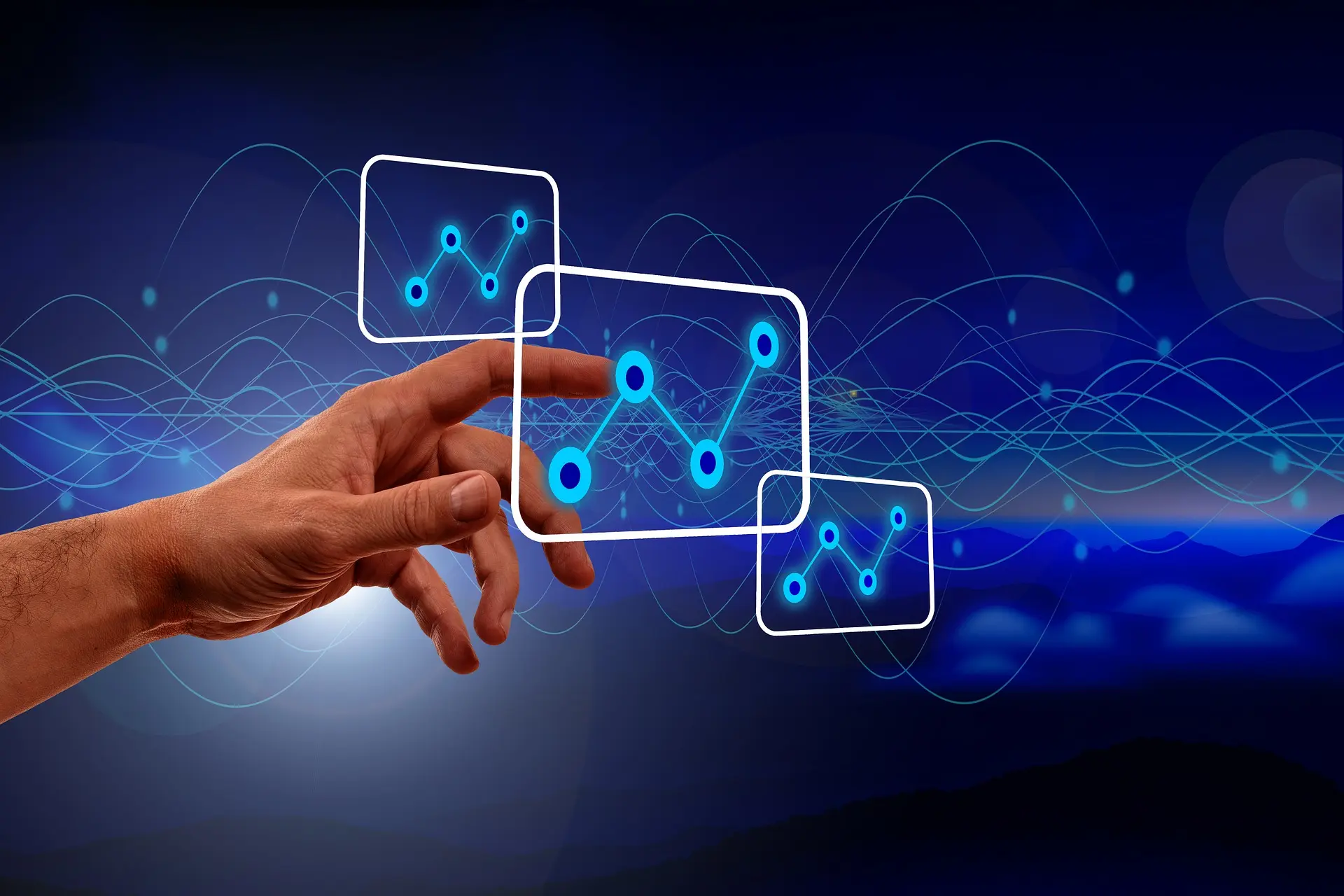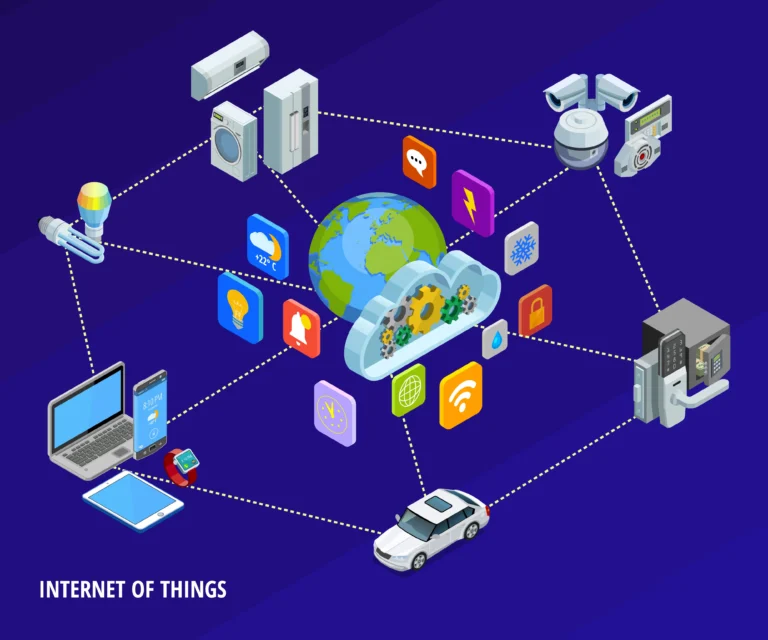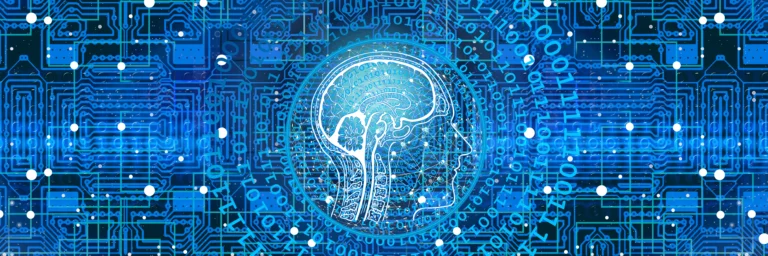40 Best Applications of AI in the Industry – Pioneering
Hey there! Have you ever wondered how your favorite virtual assistants, like Siri or Alexa, can understand and respond to your voice commands? Well, that’s thanks to Artificial Intelligence, or AI for short. AI is all about creating machines that can think and learn like humans. It’s pretty cool stuff, right? It’s being used in all sorts of industries to make things easier and more efficient.
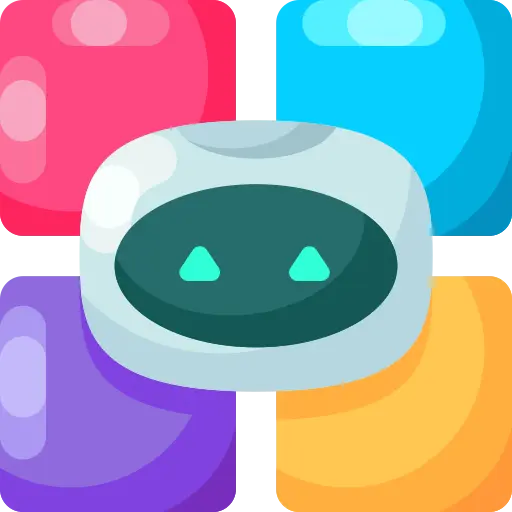
But why is AI so important in the industry? Well, by using AI, companies can automate repetitive tasks and make more accurate predictions and decisions. It’s also helping to create new products and services, as well as new business models. So, you can imagine how much more efficient and cost-effective companies can be when they use AI. And that’s not all, AI is also helping to enhance customer service and experience.
So, in this blog post, we’re going to take a closer look at the “Best Applications of AI” out there. We’ll show you the top 40 ways that AI is being used across different industries to make things better. This post is all about giving you a glimpse into how AI is making a real difference in the world. We hope it will be both informative and fun to read.
Best Applications of AI in Healthcare
1. Medical diagnosis and treatment planning

AI is revolutionizing the way medical professionals diagnose and treat patients. Machine learning algorithms can analyze patient data, such as lab results and medical images, to identify patterns and make predictions about a patient’s condition. For example, an AI system can be trained to identify signs of cancer in a CT scan and then recommend a course of treatment. This can help to improve the accuracy of diagnoses and reduce the time it takes to develop a treatment plan.
Regard, a health-tech firm, employs AI technologies to diagnose patients. The business refers to its automated technology as a “clinical co-pilot” for EMRs. To arrive at a diagnosis, EMR data is synthesized. Furthermore, healthcare practitioners receive precise advice regarding patient treatment. To avoid fatigue among healthcare personnel, the technology also automatically updates patient documentation.
This book “CURRENT Medical Diagnosis and Treatment 2021” might help you further with this sector.
2. Robotic Surgery
Robotic surgery is another area where AI is making a big impact. By using robotic surgical systems, doctors can perform procedures with more precision and control than ever before. For example, the da Vinci surgical system, which is powered by AI, allows surgeons to perform complex procedures such as prostate surgery with greater precision and less invasiveness.
Theator has developed an AI video system to assist surgeons in seeing what went wrong and right during surgeries. They may then analyze the film to make future improvements.
Surgical robots, which are becoming more ubiquitous in operating rooms, are examples of artificial intelligence applications in healthcare. Many are less invasive and frequently outperform non-robotic procedures. These applications of AI will not replace human surgical competence. They can, however, collaborate with surgeons to increase the probability of successful surgeries.
This book “Atlas of Robotic General Surgery” might help you further with this sector.
3. Drug discovery and development
AI is also being used to speed up the process of drug discovery and development. Machine learning algorithms can be used to analyze large amounts of data on drug interactions, side effects, and efficacy. For example, an AI system can be trained to identify potential new drugs that might be effective against a particular disease. This can help to reduce the time and cost of developing new drugs.
BioXcel Therapeutics uses artificial intelligence to discover and develop novel drugs in the disciplines of immuno-oncology and neurology. Furthermore, AI is used in the company’s medication re-innovation initiative to uncover new applications for current treatments or to identify new patients.
PathAI is a company that creates machine-learning technologies to help pathologists make a more accurate diagnoses. The current objectives of the organization include minimizing errors in cancer detection and creating ways for personalized medical treatment.
PathAI collaborated with pharmaceutical companies such as Bristol-Myers Squibb and organizations such as the Bill & Melinda Gates Foundation to expand their AI technology into other healthcare businesses.
This book “Drug Discovery and Development: Technology in Transition” might help you further with this sector.
4. Medical imaging analysis
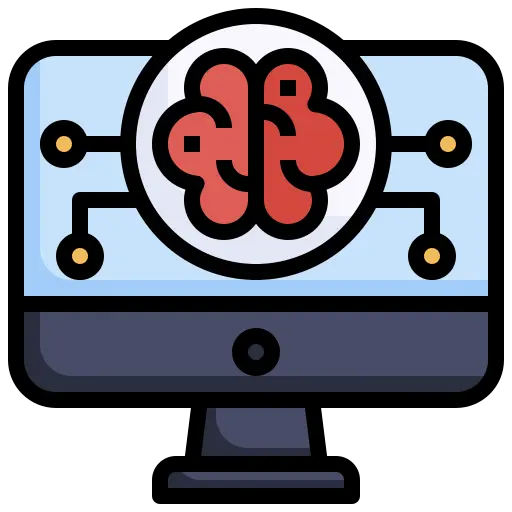
Medical imaging, such as X-rays and MRI scans, plays a critical role in diagnosis and treatment. However, interpreting these images can be time-consuming and requires a high level of expertise. With AI, medical professionals can streamline the process of interpreting images by using machine learning algorithms to identify patterns and make predictions. For example, an AI system can be trained to identify signs of a brain injury in a CT scan and make a diagnosis faster.
Enlitic creates deep-learning medical solutions that improve radiology diagnosis. The deep learning platform of the firm analyzes unstructured medical data – radiology pictures, blood tests, EKGs, genomes, and patient medical history – to provide clinicians with superior insight into a patient’s real-time needs.
This book “Breast Abnormality and Imaging (Medical & Biological Image Analysis)” might help you further with this sector.
5. Patient monitoring and management
AI can also be used to enhance the care of patients by monitoring their vital signs, such as heart rate, blood pressure, and oxygen levels, in real time. For example, wearable devices such as smartwatches and fitness trackers can be integrated with AI systems to track patient data and alert healthcare providers to potential issues. This can help to improve patient outcomes and reduce the risk of complications.
VirtuSense tracks a patient’s movements using AI sensors, alerting physicians and carers to impending falls. Among the company’s products are VSTAlert, which can anticipate when a patient is about to get up and warn necessary medical personnel, and VST Balance, which uses AI and machine vision to assess a person’s risk of falling within the next year.
The book “Mobile Application for Monitoring and Management of Out-Patients: Remote Clinical Consultation App” might help you further with this sector.
Best Applications of AI in Finance
6. Fraud detection

AI is being used to keep financial transactions safe by detecting and preventing fraud. Machine learning algorithms can be trained to identify patterns and anomalies in financial data that may indicate fraudulent activity. For example, an AI-powered system can be used to detect suspicious transactions on a credit card and block them in real time to prevent fraud.
The book “Fraud Analytics Using Descriptive, Predictive, and Social Network Techniques: A Guide to Data Science for Fraud Detection (Wiley and SAS Business Series)” might help you further with this sector.
7. Risk assessment
AI is also being used to assess risk in the financial industry. Machine learning algorithms can analyze large amounts of data on market conditions, financial instruments, and other factors to identify potential risks and make predictions about future market trends. For example, an AI-powered system can be used to assess the risk of stock investment and make recommendations for portfolio management.
The book “Risk Assessment: A Cabrini Law Novel: Cabrini Law Series, Book 1” might help you further with this sector.
8. Trading and portfolio management
AI is also being used to optimize investments by automating the process of trading and portfolio management. Machine learning algorithms can be used to analyze market data and make predictions about future price movements. For example, an AI-powered system can be used to identify undervalued stocks and make buy or sell decisions for an investment portfolio.
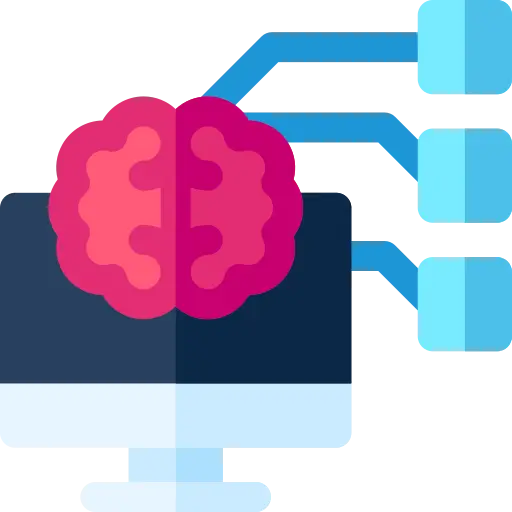
9. Credit scoring and underwriting
AI is being used to assess the creditworthiness of individuals and businesses. Machine learning algorithms can be trained to analyze data on credit history, income, and other factors to predict the likelihood of loan repayment. For example, an AI-powered system can be used to assess the creditworthiness of a small business owner and decide whether to approve a loan application.
The book “Credit Scoring: The Ten Tools” might help you further with this sector.
10. Customer service and support
AI is being used to improve customer service and support in the financial industry. Machine learning algorithms can be used to analyze customer data and make predictions about their needs and preferences. For example, an AI-powered chatbot can be used to provide customer service and support for online banking customers.
The book “Customer Service Care Success for Life -V2” might help you further with this sector.
Best Applications of AI in Manufacturing
11. Predictive maintenance

AI is being used to prevent downtime in manufacturing by predicting when equipment is likely to fail. Machine learning algorithms can be trained to analyze data on equipment performance, usage, and other factors to identify patterns and make predictions about when equipment is likely to fail. For example, a manufacturing plant can use an AI-powered system to predict when a particular machine is likely to break down and schedule maintenance before it happens.
The book “An Introduction to Predictive Maintenance” might help you further with this sector.
12. Quality control and inspection
AI is also being used to ensure quality in manufacturing by automating the process of quality control and inspection. Machine learning algorithms can be used to analyze images, such as those captured by cameras and sensors, to identify defects and anomalies in manufactured products. For example, an AI-powered system can be used to inspect the surface finish of a car body during the manufacturing process and identify any defects.
The book “Automated Inspection and Quality Assurance” might help you further with this sector.
13. Process optimization
AI is being used to improve the efficiency of manufacturing processes. Machine learning algorithms can be used to analyze data on process performance, such as production rates, to identify patterns and make predictions about how to optimize processes. For example, an AI-powered system can be used to analyze data on the performance of a production line and identify bottlenecks that are slowing down production.
The book “Artificial Intelligence Methods for Optimization of the Software Testing Process” might help you further with this sector.
14. Supply chain management

AI is being used to streamline logistics in the manufacturing industry. Machine learning algorithms can be used to analyze data on supply chain performance, such as delivery times and inventory levels, to identify patterns and make predictions about how to optimize logistics. For example, an AI-powered system can be used to optimize the delivery routes for a fleet of delivery trucks.
The book “Data Analytics and Artificial Intelligence for Inventory and Supply Chain Management” might help you further with this sector.
15. Autonomous robots and drones
AI is being used to enhance automation in manufacturing by developing autonomous robots and drones. Machine learning algorithms can be used to train these machines to perform tasks, such as assembling products and moving materials, with greater precision and autonomy. For example, an AI-powered robot can be used to assemble electronic devices in a manufacturing plant and drones can be used to inspect large industrial sites.
The book “Learn Robotics Programming: Build and control AI-enabled autonomous robots” might help you further with this sector.
Best Applications of AI in Retail
16. Personalized recommendations and advertising
AI is being used to tailor recommendations and advertising to individual customers in the retail industry. Machine learning algorithms can be used to analyze data on customer behavior and preferences to make predictions about what products and services they are likely to be interested in. For example, an e-commerce website can use an AI-powered system to recommend products to customers based on their browsing and purchase history.
17. Inventory management

AI is also being used to optimize stock levels in the retail industry. Machine learning algorithms can be used to analyze data on sales, customer demand, and other factors to predict when items are likely to sell out and when new stock should be ordered. For example, a retail store can use an AI-powered system to manage its inventory and make sure that it always has the right products in stock.
The book “The Development of an Artificial Intelligence System for Inventory Management” might help you further with this sector.
18. Price optimization
AI is being used to maximize profit in the retail industry by optimizing prices. Machine learning algorithms can be used to analyze data on sales, customer demand, and competition to predict the ideal price for a product. For example, an e-commerce website can use an AI-powered system to adjust the prices of products in real time based on changes in demand and competition.
The book “Machine Learning: A Bayesian and Optimization Perspective” might help you further with this sector.
19. Chatbots and virtual assistants

AI is being used to enhance customer service in the retail industry by developing chatbots and virtual assistants. Machine learning algorithms can be used to train these systems to understand natural language and respond to customer inquiries. For example, a retail store can use an AI-powered chatbot to answer customer questions and provide product recommendations.
The book “Conversational AI with Rasa: Build, test, and deploy AI-powered, enterprise-grade virtual assistants and chatbots” might help you further with this sector.
20. Store optimization and layout
AI is being used to improve the shopping experience in retail stores by optimizing store layout and design. Machine learning algorithms can be used to analyze data on customer behavior and preferences to predict how different store layouts and designs will impact sales. For example, a retail store can use an AI-powered system to optimize the placement of products and displays to increase sales.
Best Applications of AI in Transportation and Logistics
21. Autonomous vehicles
AI is being used to develop autonomous vehicles that can drive themselves without human intervention. Machine learning algorithms can be used to train these vehicles to understand their environment, navigate roads, and make decisions. For example, self-driving cars and trucks powered by AI can be used to transport goods and people more efficiently and safely.
The book “Autonomous Vehicle Driverless Self-Driving Cars and Artificial Intelligence” might help you further with this sector.
22. Traffic management and optimization

AI is also being used to manage and optimize traffic flow. Machine learning algorithms can be used to analyze data on traffic patterns, such as real-time traffic data from GPS and cameras, to predict traffic congestion and make recommendations for routing and traffic signal timing. For example, a city can use an AI-powered system to optimize traffic flow and reduce congestion during peak hours.
The book “Air Traffic Management and Systems IV” might help you further with this sector.
23. Route planning and optimization
AI is being used to optimize logistics by planning and optimizing routes for delivery vehicles. Machine learning algorithms can be used to analyze data on traffic, weather, and other factors to predict the optimal routes and schedule deliveries more efficiently. For example, a delivery company can use an AI-powered system to plan routes for its delivery trucks, taking into account traffic and weather conditions.
24. Predictive maintenance of vehicles and equipment
AI is being used to reduce downtime in the transportation and logistics industry by predicting when vehicles and equipment are likely to fail. Machine learning algorithms can be trained to analyze data on equipment performance and usage to identify patterns and make predictions about when maintenance is needed. For example, an airline can use an AI-powered system to predict when the engine of an airplane is likely to fail and schedule maintenance before it happens.
25. Supply chain optimization

AI is being used to optimize logistics in the transportation and logistics industry by automating the process of supply chain management. Machine learning algorithms can be used to analyze data on supply chain performance, such as delivery times and inventory levels, to identify patterns and make predictions about how to optimize logistics. For example, a logistics company can use an AI-powered system to optimize delivery routes and scheduling for its fleet of vehicles, reducing transportation costs and improving delivery times.
The book “Supply Chain Network Design” might help you further with this sector.
Best Applications of AI in Energy
26. Predictive maintenance of power plants
AI is being used to keep power plants running smoothly by predicting when equipment is likely to fail. Machine learning algorithms can be trained to analyze data on equipment performance, usage, and other factors to identify patterns and make predictions about when maintenance is needed. For example, a power plant can use an AI-powered system to predict when a particular piece of equipment is likely to break down and schedule maintenance before it happens.
The book “Prediction Techniques for Renewable Energy Generation and Load Demand Forecasting” might help you further with this sector.
27. Energy demand forecasting

AI is also being used to predict energy demand in order to ensure that there is enough power to meet the needs of customers. Machine learning algorithms can be used to analyze data on historical energy usage and weather patterns to make predictions about future energy demand. For example, an electricity provider can use an AI-powered system to predict energy demand during a heatwave and adjust power generation accordingly.
The book “Hybrid Intelligent Technologies in Energy Demand Forecasting” might help you further with this sector.
28. Smart grid management
AI is being used to optimize the management of the electrical grid. Machine learning algorithms can be used to analyze data on energy usage, weather conditions, and other factors to predict when and where energy will be needed, and how to distribute it most efficiently. For example, a smart grid system can use an AI-powered system to optimize the distribution of energy from renewable sources such as solar and wind and balance it with the energy from traditional sources.

The book “Applications of Artificial Intelligence in Planning and Operation of Smart Grids (Power Systems)” might help you further with this sector.
29. Renewable energy forecasting
AI is being used to forecast the production of renewable energy sources. Machine learning algorithms can be used to analyze data on weather conditions, such as solar radiation and wind speeds, to predict how much energy will be produced by renewable sources. For example, a wind farm can use an AI-powered system to predict the power generation of the turbines.
The book “Artificial Intelligence for Renewable Energy systems” might help you further with this sector.
30. Optimization of energy usage
AI is being used to optimize the usage of energy by predicting how energy is used and identifying ways to save energy. Machine learning algorithms can be used to analyze data on energy usage, weather conditions, and other factors to predict how energy will be used and identify opportunities to save energy. For example, an AI-powered system can be used to optimize the temperature settings in a building and reduce energy consumption.
Best Applications of AI in Agriculture
31. Crop monitoring and analysis
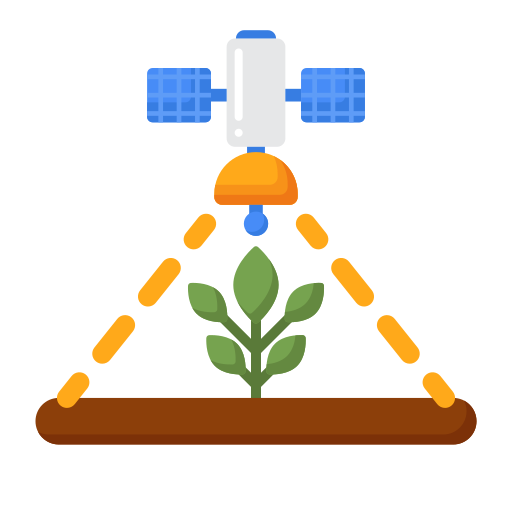
AI is being used to improve crop yields by monitoring and analyzing crop growth and health. Machine learning algorithms can be used to analyze data from cameras and sensors to identify patterns and make predictions about crop health. For example, a farmer can use an AI-powered system to monitor the growth of crops such as corn and soybeans and analyze the data to identify areas where the crop is healthy, and where it may be underperforming.
The book “Internet of Things and Analytics for Agriculture” might help you further with this sector.
32. Weather forecasting and prediction

AI is also being used to improve weather forecasting and prediction in agriculture. Machine learning algorithms can be used to analyze data on weather patterns, such as temperature, precipitation, and wind speeds, to predict how weather conditions will impact crop growth. For example, a farmer can use an AI-powered system to predict the weather for the next week and plan accordingly.
The book “FORECASTING AND PREDICTION WITH PYTHON” might help you further with this sector.
33. Precision farming
AI is being used to optimize crop yields through precision farming. Machine learning algorithms can be used to analyze data on crop growth, weather conditions, and soil conditions to make predictions about how to optimize crop yields. For example, a farmer can use an AI-powered system to optimize the amount of fertilizer, water, and pesticides to use on a field, based on the crop type, weather, and soil conditions.
The book “Agriculture 5.0: Artificial Intelligence, IoT and Machine Learning ” might help you further with this sector.
34. Livestock monitoring
AI is being used to monitor and improve the health of livestock. Machine learning algorithms can be used to analyze data from cameras and sensors to identify patterns and make predictions about the health of the animals. For example, a farmer can use an AI-powered system to monitor the health of cows and identify those that may be sick or in need of medical attention.
The book “Artificial Intelligence and Data Science in Environmental Sensing” might help you further with this sector.
35. Soil analysis

AI is being used to analyze soil data to identify patterns and make predictions about soil health and fertility. Machine learning algorithms can be used to analyze data from soil sensors, such as pH levels and nutrient content, to identify patterns and make predictions about how to optimize soil health. For example, a farmer can use an AI-powered system to analyze soil data and optimize the amount of fertilizer and other soil amendments that need to be added to improve crop yields.
The book “Digital Mapping of Soil Landscape Parameters: Geospatial Analyses using Machine Learning and Geomatics” might help you further with this sector.
Best Applications of AI in Security
36. Surveillance and intrusion detection
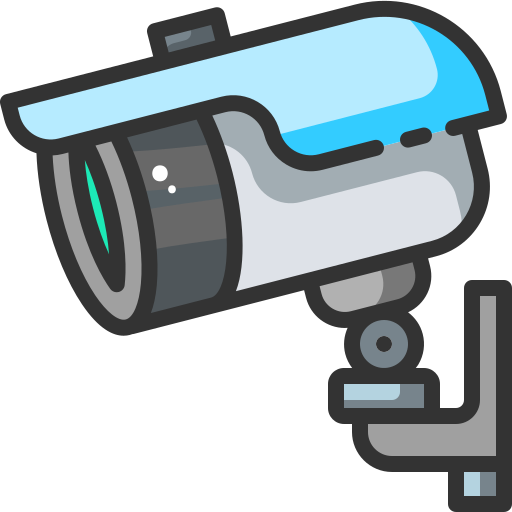
AI is being used to improve surveillance and intrusion detection in the security industry. Machine learning algorithms can be used to analyze data from cameras and sensors to identify patterns and make predictions about when and where intrusions are likely to occur. For example, a security system can use an AI-powered system to analyze footage from security cameras and identify potential intruders.
37. Biometric authentication
AI is also being used to improve biometric authentication methods, such as fingerprint and facial recognition, to secure access to buildings and devices. Machine learning algorithms can be used to analyze data from biometric sensors to identify patterns and make predictions about who is trying to gain access. For example, a smartphone can use an AI-powered system to analyze fingerprints and facial recognition to unlock the device.
38. Cybersecurity

AI is being used to improve cybersecurity by detecting and preventing cyber-attacks. Machine learning algorithms can be used to analyze data on network traffic and identify patterns that indicate a cyber-attack is taking place. For example, a company can use an AI-powered system to detect and prevent a Distributed Denial of Service (DDoS) attack on its network.
The book “Artificial Intelligence (AI) Governance and Cyber-Security” might help you further with this sector.
39. Fraud detection
AI is being used to detect and prevent fraud in various industries. Machine learning algorithms can be used to analyze data on transactions and identify patterns that indicate fraud is taking place. For example, a bank can use an AI-powered system to detect fraudulent transactions on customers’ accounts.
The book “Machine Learning for Auditors: Automating Fraud Investigations Through Artificial Intelligence” might help you further with this sector.
40. Emergency response
AI is being used to improve emergency response times by analyzing data from cameras and sensors to identify patterns and make predictions about when and where emergencies are likely to occur. For example, an AI-powered system can analyze data from cameras and sensors in a city to predict when an emergency like a car accident or fire is likely to happen, and alert emergency services to respond quickly.
The book “The Power of Crisis: How Three Threats – and Our Response – Will Change the World” might help you further with this sector.
Conclusion
In this blog post, we have discussed 40 of the best applications of AI in industry, including healthcare, finance, manufacturing, retail, transportation, logistics, energy, agriculture, and security. We have explored how AI is being used to improve diagnostics, surgical procedures, drug discovery, medical imaging, patient monitoring, fraud detection, risk assessment, trading and portfolio management, credit scoring, customer service, supply chain management, traffic management, route planning, predictive maintenance, personalized recommendations, inventory management, price optimization, chatbots, store optimization, autonomous vehicles, renewable energy forecasting, precision farming, livestock monitoring, soil analysis, surveillance and intrusion detection, biometric authentication, cybersecurity, and emergency response.
As AI technology continues to evolve and improve, we can expect to see even more applications of AI in the industry in the future. Advancements in areas such as natural language processing, computer vision, and deep learning are likely to open up new opportunities for AI in areas such as customer service, product development, and supply chain management. Additionally, the increasing availability of data and the growing capabilities of AI systems will likely lead to new discoveries and advancements in a wide range of industries.
The potential for AI in the industry is vast and exciting, and there is still much to be explored and discovered. As a reader, we encourage you to continue to learn more about the best applications of AI in the industry and explore the ways in which AI technology can be used to improve your business or organization. To stay up-to-date with the latest developments in AI, you can read industry publications, attend conferences, and reach out to experts in the field. With the right knowledge and resources, you can unlock the full potential of AI and take your business to the next level.

